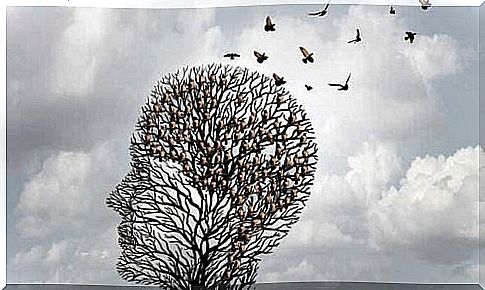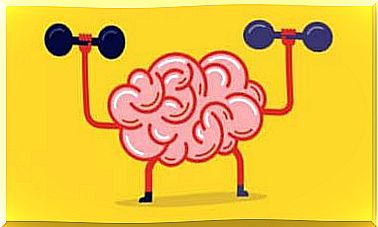Heuristics: The Mind Shortcuts

Humans have long been viewed as rational beings who assess their environments thoroughly and accurately. But in the words of SE Taylor, we are “cognitively affectionate.” This is a metaphor that portrays man as a being that makes optimal use of mental processes. The cognitive strategies that help us achieve this are called heuristics.
What are heuristics?
Heuristics are the mental shortcuts we use to solve complex cognitive problems. They are unconscious rules that help us reformulate problems. This makes them simpler and makes devising solutions an almost automated process.
Thanks to heuristics, we don’t have to think hard about every problem. However, these shortcuts are not always accurate. Sometimes we even make mistakes because of it.
There are different types of cognitive heuristics that we use almost every day. However, in this article we are only going to talk about the ones we use most often. These are the representativeness heuristic, the availability heuristic, the anchor heuristic and the familiarity heuristic.
Representativeness heuristic
This mental shortcut involves estimating the probability that a certain stimulus belongs to a certain category. These stimuli can be people, events, objects, or whatever. By assessing superficial traits and keeping existing categories in mind, we classify these stimuli.
Now comes the sticking point: not everything that fits into a certain category is necessarily true. As we mentioned earlier, heuristics can lead us to make mistakes.
We give you an example of a representativeness heuristic. Imagine that someone introduces you to 3 new people. Before you actually meet them, you already know that 1 of these people is a teacher. After a short conversation with the 3 people, you find out that 2 of them don’t care about children.
The remaining person actually likes children. By using representativeness heuristics, you can come to the conclusion that whoever children like is also the teacher.

Availability heuristics
This heuristic is used to estimate the following things: the probability of an event, the frequency at which a certain category of stimuli occurs or the relationship between these two things. This estimate is made by referring to how many memories we have of a particular stimulus (or stimulus category).
You could compare it to asking for intuitive statistical facts based on memories. However, intuitive statistical facts do not exist, because statistics are based on numbers).
All that is a mouthful and perhaps not so easy to understand. To make it clearer, let’s use an example again. In this case, the question is: are there more psychologists or psychiatrists? To answer this question, we can use the availability heuristic.
Which of the two categories is more common in our memory? Psychologists or psychiatrists? If we have more experience with psychologists, our answer will reflect that.
Anchor heuristics and adjustment heuristics
When we are in an uncertain situation and we have not been able to gain knowledge from previous experience, we can still find a reference point. This process is called the anchor and adjustment heuristic. The reference point is the anchor and our starting point. Subsequently, various intuitive adaptation strategies are used to resolve the uncertain situation.
This situation is often set in when we try to imagine certain things. To give an example: what is the average income of working Dutch people? First we probably think of our own annual income. Is this below or above average? After we have made the necessary adjustments to our thinking, we will have an answer to the above question.
A common error with these types of heuristics is the so-called “false consensus effect.” This is a cognitive bias that causes us to overestimate how much we have in common with others. We conclude that their beliefs, opinions and thoughts correspond to ours. This results in the aforementioned “false consensus.” In the case of the anchor heuristic, our opinion is the anchor from which we derive the thoughts of others.

Familiarity heuristic
This is the tendency to estimate the probability of an event based on how easily we can imagine it. The easier it is to paint a mental picture of something, the more likely we are to believe it is possible.
This heuristic appears to be closely related to so-called “counterfactory thinking.” This in turn is associated with the so-called “ hindsight bias”. We think back to events from the past or in the present. We try to imagine alternative outcomes in order to feel better. However, what often achieve the opposite.
A typical example of this counterfactorial thinking is the “what if…?” question. This is a typical kind of comment we give when we think back to something. We then wonder what could have happened if things had gone a little differently.
Another example of this involves winning a silver medal. The one who is in second place is not always as lucky as the one who won bronze. How is that possible? Well, the silver medalist can easily imagine what it would feel like to have won. Now, however, he is in a “worse” situation.
However, whoever is in third place can very well imagine what it would have been like if he had performed just a little worse. Then he shouldn’t have received a single medal! Then bronze is of course the better option. Hence the immense joy one feels in third place (compared to second place).
Finally
So now that we know this about heuristics, you’ll probably be able to point out a number of occasions to use them yourself. While they are often inaccurate and based solely on our intuition, they are our evolutionary “weapons” to deal with certain problems quickly and efficiently. Of course, we do not intend to use these heuristics when making important choices. In such cases you should be extra careful.









